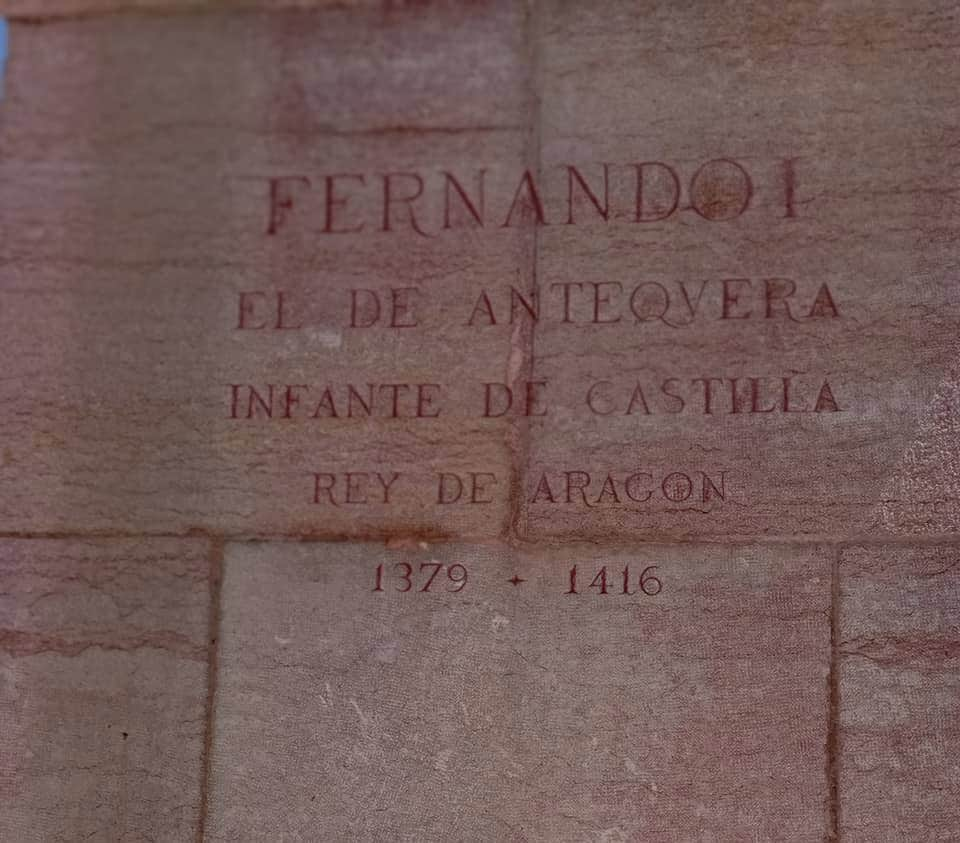Alcazba
We recently visited the site of Alcazba in Antequera, it did not disappoint. Roughly a 30 minute journey from home. We parked in a car park we knew and walked to the area we were going to explore. Most photographs provided by our friend Keith.
The walk was a bit arduous, uphill and steps.... lots of steps and not for those with mobility issues. It is possible to park outside the Alcazba.
The high point of Antequera with breath taking views. Nearby, the tiled roofs of houses sit closely together on the narrow winding streets. The churches all have such ornate buildings, roofs, towers and spires that your eyes try to take it all in. A true feast for the eyes and the spirit.
In the far distance are mountains and Peña de los Enamorados ("The Lovers' Rock) - some call it the sleeping man or the Indian. What ever your preference for its name it is a constant in the landscape all around Antequera and once seen can not be unseen.




The whole area is a feast for the heart and soul. The history is amazing and we could have rushed off to somewhere else but chose to do the area justice. It includes:-
Arco de los Gigantes - Arch of the Giants
Real Colegiata - Church
Mirador de las Termas - Roman Bathhouse ruins
and Michael Hopkins Sculpture
The tickets to enter the Real Colegiata include a QR code for you to download a narrative of the whole Alcazba (in your chosen language) - in my opinion it represented great value and understanding of the area.

Arco de los Gigantes
This is the entrance to the old medina and route to the souk. It is an impressive archway and when you consider the age of it, it is a feat of engineering and construction. It leads to the rest of the trip into history.
The Arch, is built into a wall more than 2 meters thick and 7 meters high. Until the 19th century, its crowning was quite spectacular, since it had a large niche flanked by two fins, in which there was a huge Roman statue of Hercules. The jug of lilies on the key, as well as the castle and the lion on the cornice which make up the coat of arms of Fernando 1 and the city.
It dates from the 1585 and was built on an old Nasrid door there are Roman statues and inscriptions to be seen.
Its layout is due to the architect Francisco de Azurriola and its construction, to the master master builder of the city Francisco Gutiérrez.
In 1909 the Arch was dispossessed of the Roman remains that it held and it was not until 1984 when the reconstruction of the immediate tower and the replacement of four large tombstones in which the Latin dedication to King Felipe Segundo was developed. A year later, the restoration was completed with the remains of the original statue of Hercules, most of the Latin inscriptions and a replica of the Roman relief that is located on the jug of lilies and that give it its current appearance.

Real Colegiate - Church
The stone built facade is beautifully imposing.
Constructed between 1514 and 1550 at the behest of the Bishop of Málaga, Don Diego Ramírez de Villaescusa. The Architect was Pedro del Campo
The Real colegiate church was the first Renaissance-style building to be erected in Andalucía. It is a wonderfully well-proportioned and very fine piece of architecture.
It contains late-Gothic elements alongside examples of pure Renaissance architecture, the highlight being its superb façade, without doubt the grandest in Antequera and built entirely with ashlar stone.
Inside is stunning. Huge pillars and 3 naves. A place to sit and contemplate whilst admiring the wooden ceiling, Florentine windows and glorious artefacts.





Mirador de las Termas - Roman Bathhouse ruins
The discovery of these baths is the first reliable proof of the location of the Roman city of Antikaria. The excavation works began in 1988 and carried on until 1991 by the Antequera Workshop School.
These are Roman-era baths that were in operation from the second half of the 1st century AD until well into the 5th century AD, undergoing major restructuring and repairs in the 3rd century. In the structures you can see the different thermal environments characteristic of the Roman world: cold, warm and hot water pools: frigidarium, tepidarium and caldarium.
In the central sector there is a large cold water pool or natatio, with benches attached to the walls that at the time was completely covered with marble and attached pilasters with plant decorations, next to it there is a large central mosaic, today covered with motifs for conservation, the central theme is a beautiful example of mythological representation: a bust of "Oceanus", an aquatic divinity that appears with all its attributes "crab claws and legs", surrounded by geometric themes, also polychrome that emulate an environment of embossed cubes.
Continuing to the East, we find a large room that archaeologists have interpreted as changing rooms, in which we again find an environment paved with mosaics: one of them refers to a maritime theme: the dolphin with Neptune's trident and in another a beautiful goblet-shaped krater.
To the north are the hot and warm water spaces and the collectors of the hot springs.
On this space, a neighborhood was built in the 15th century AD, from which remains of the walls, streets and domestic pavements can be seen.


Michael Hopkin
Michael Hoskin (London, 27 February 1930 - Cambridge, 5 December 2021 ) was a British archaeoastronomer and professor Emeritus and a Professor of History and Philosophy of Science at the University of Cambridge
He is honoured by the city of Antequera in recognition of his research into prehistoric Mediterranean structures that led to the nearby 5000 year old Antequera Dolmens site being added to the UNESCO list of World Heritage sites.
Dolmens are collective tombs where Neolithic and Copper Age clans honoured their dead. After studying over 3,000 of these megalithic tombs, Hoskin’s work uncovered that unlike other megalithic structures, which are positioned in relation to the sun’s rays, the Antequera Dolmens are instead positioned in line with a huge rock — the Peña de los Enamorados.
This ground-breaking work led to the site being listed as a UNESCO World Heritage Site. In recognition of his research, the Spanish Government awarded Hoskin the Medalla de Oro de las Bellas Artes (Gold Medal of Fine Arts) in 2015.
Since being declared a World Heritage site by UNESCO, the economy of the city of Antequera has been has transformed, as tourists flock to visit the site. In recognition of Hoskin’s contribution to Antequera, a new square has been created in his name looking out on the Peña de los Enamorados and the Antequera Dolmens.
In an official ceremony, the Mayor of Antequera, Manuel Barón, and the central government representative in Malaga, Miguel Briones, together with Hoskin and 25 members of his family, unveiled a bronze bust in this new square dedicated to the archaeologist and his research. The bust is accompanied by a few words on behalf of the town thanking Hoskin for his ‘crucial research work’ and his contribution to the town’s livelihood.


When we attended the Notary office in Antequera to sign for our home, afterwards we were taken to a plaza with a restaurant opposite it for a meal.
All I could remember was that there was a statue of a horse and man........
Much googling found us in Plaza Coso Viejo. The statue is of Fernando I on his horse.
The restaurant is Meson Coso Viejo and we enjoyed a Pizza and a Burger. Great surroundings, great food and a great place to sit and watch the world go by.


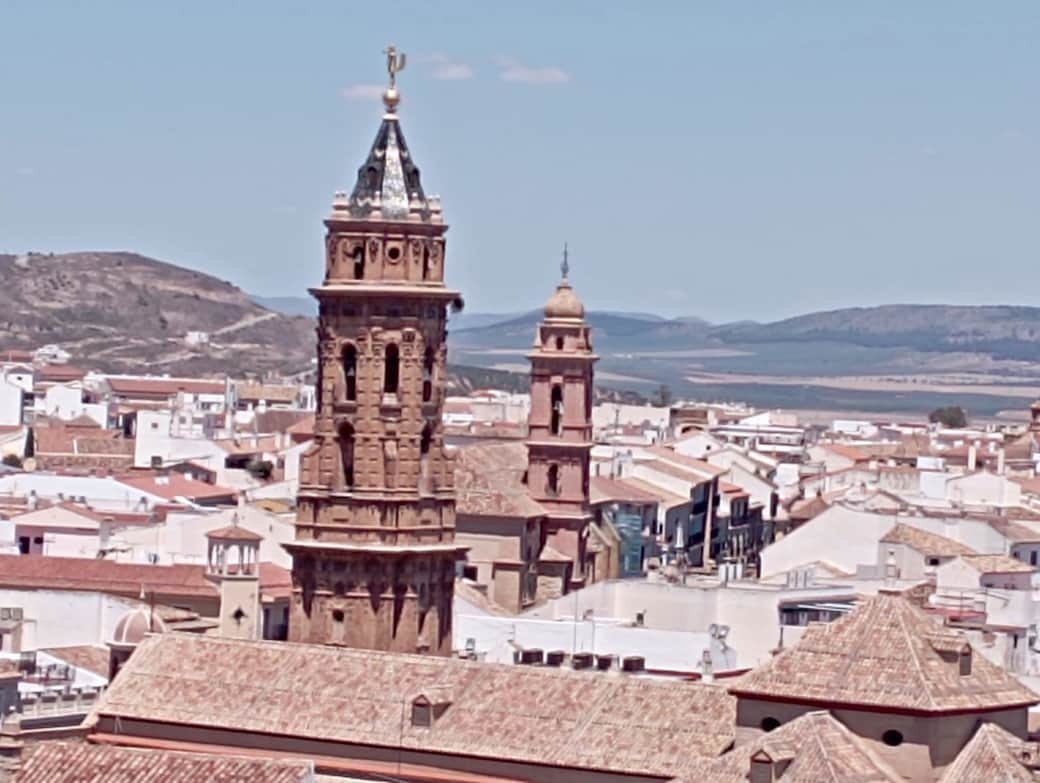
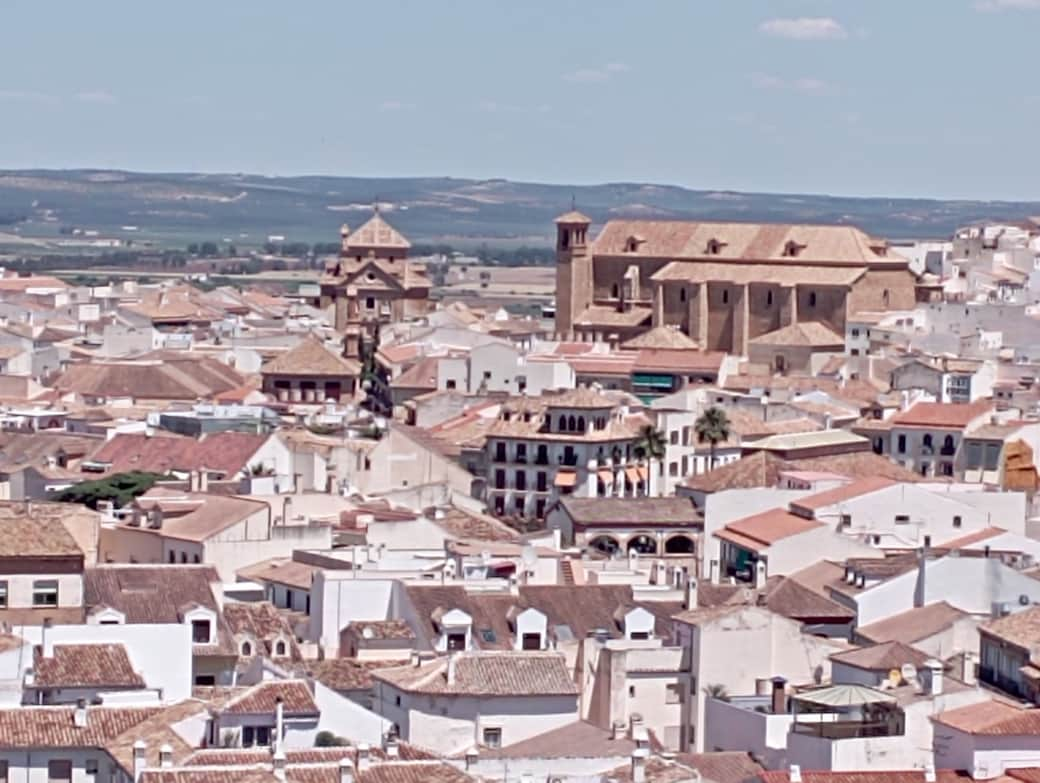
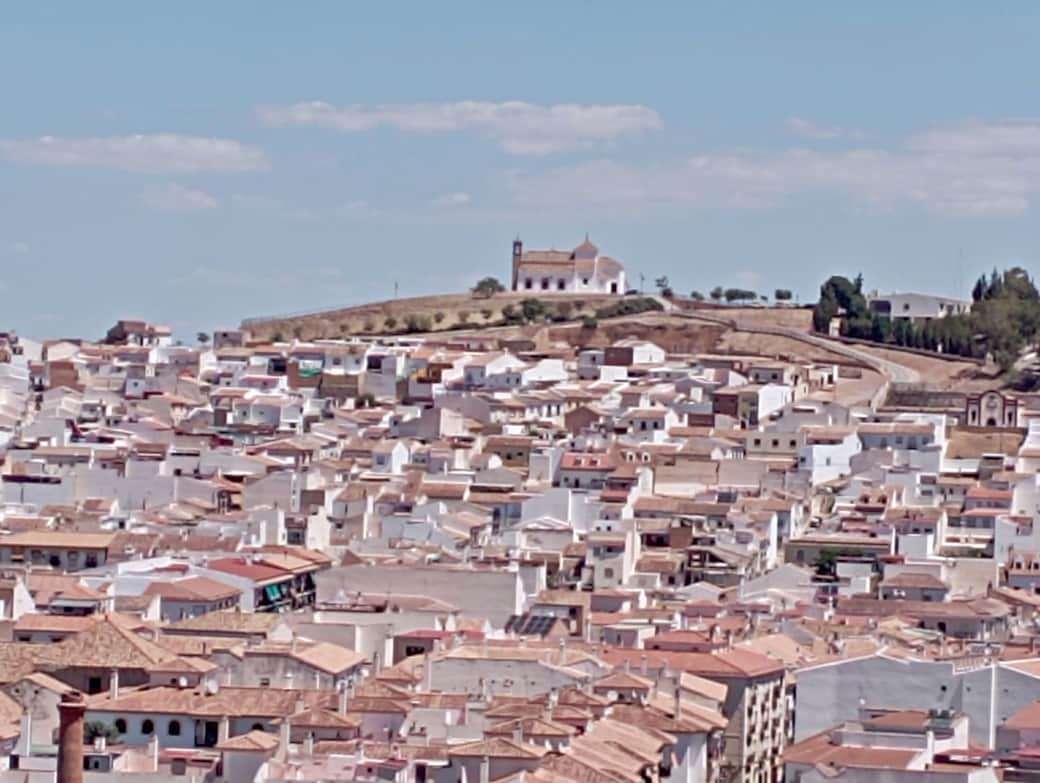
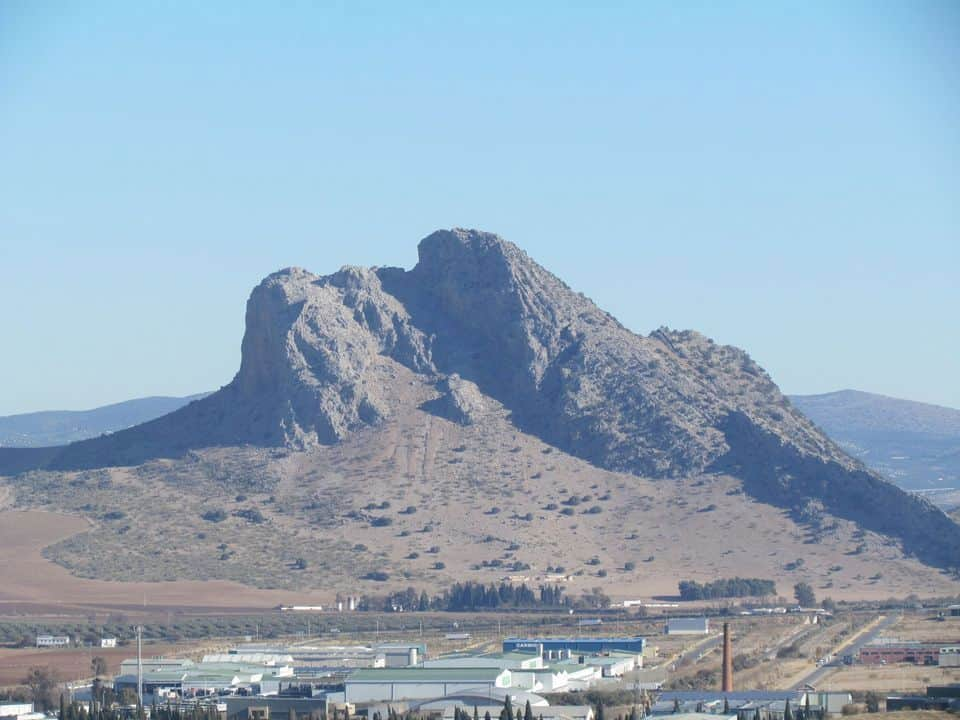
Toda la zona es un festín para el corazón y el alma. La historia es asombrosa y podríamos habernos ido corriendo a otro lugar, pero decidimos hacer justicia a la zona. Incluye
Arco de los Gigantes
Real Colegiata - Iglesia
Mirador de las Termas - Ruinas de las termas romanas
y la escultura de Michael Hopkins
Las entradas para entrar en la Real Colegiata incluyen un código QR para descargar una descripción de toda la Alcazaba (en el idioma que elijas). En mi opinión, es una excelente forma de conocer la zona.
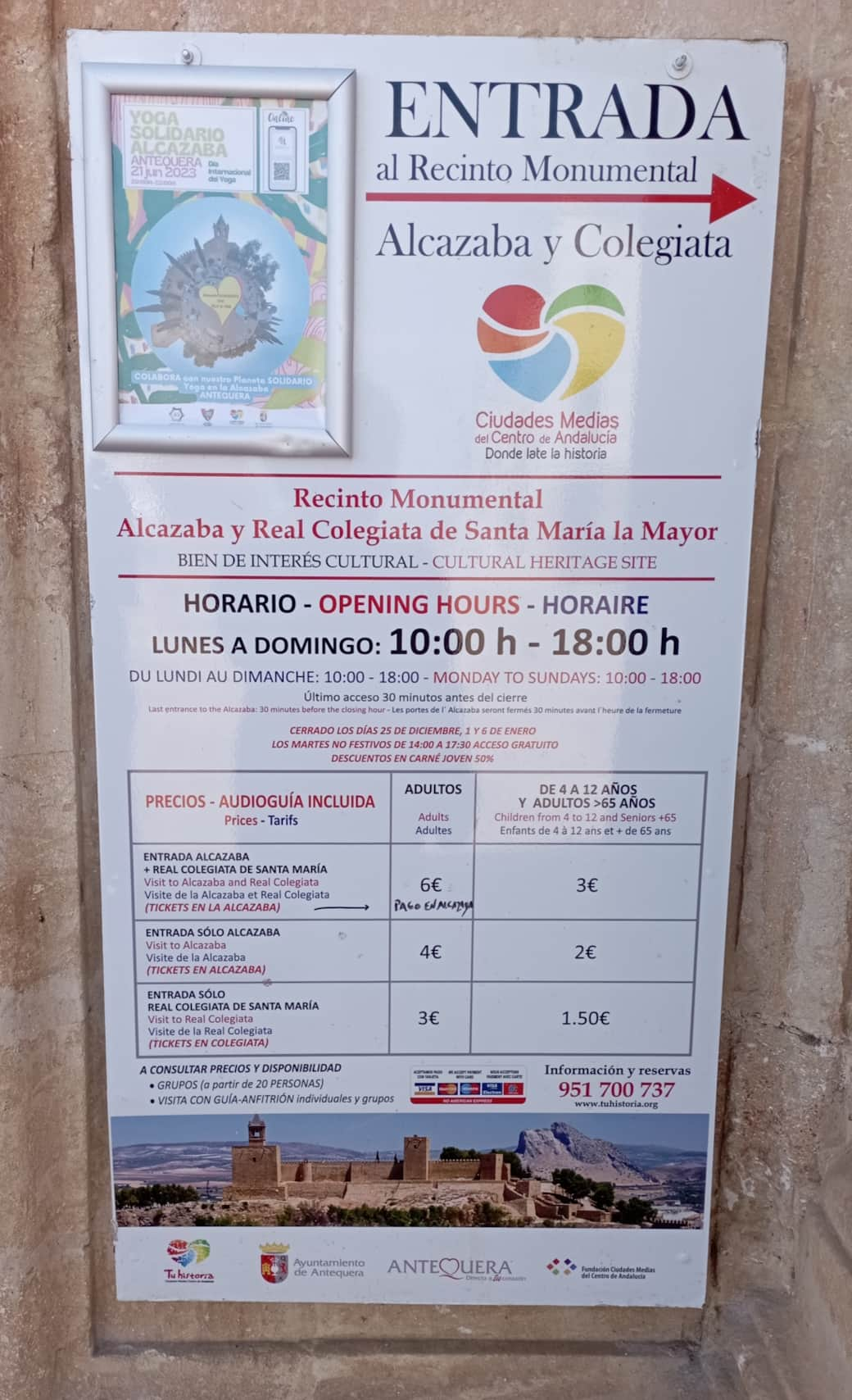
Arco de los Gigantes
Es la entrada a la antigua medina y la ruta hacia el zoco. Es un arco impresionante y, teniendo en cuenta su antigüedad, toda una proeza de ingeniería y construcción. Da paso al resto del viaje por la historia.
El Arco, está construido en un muro de más de 2 metros de grosor y 7 metros de altura. Hasta el siglo XIX, su coronación era bastante espectacular, ya que tenía una gran hornacina flanqueada por dos aletas, en la que había una enorme estatua romana de Hércules. La jarra de azucenas de la clave, así como el castillo y el león de la cornisa que conforman el escudo de Fernando 1 y de la ciudad.
Data de 1585 y se construyó sobre una antigua puerta nazarí en la que se pueden ver estatuas e inscripciones romanas.
Su trazado se debe al arquitecto Francisco de Azurriola y su construcción, al maestro mayor de la ciudad Francisco Gutiérrez.
En 1909 el Arco fue despojado de los restos romanos que albergaba y no fue hasta 1984 cuando se procedió a la reconstrucción de la torre inmediata y a la reposición de cuatro grandes lápidas en las que se desarrolló la dedicatoria latina al rey Felipe Segundo. Un año después, la restauración se completó con los restos de la estatua original de Hércules, la mayor parte de las inscripciones latinas y una réplica del relieve romano que se encuentra sobre la jarra de azucenas y que le dan su aspecto actual.
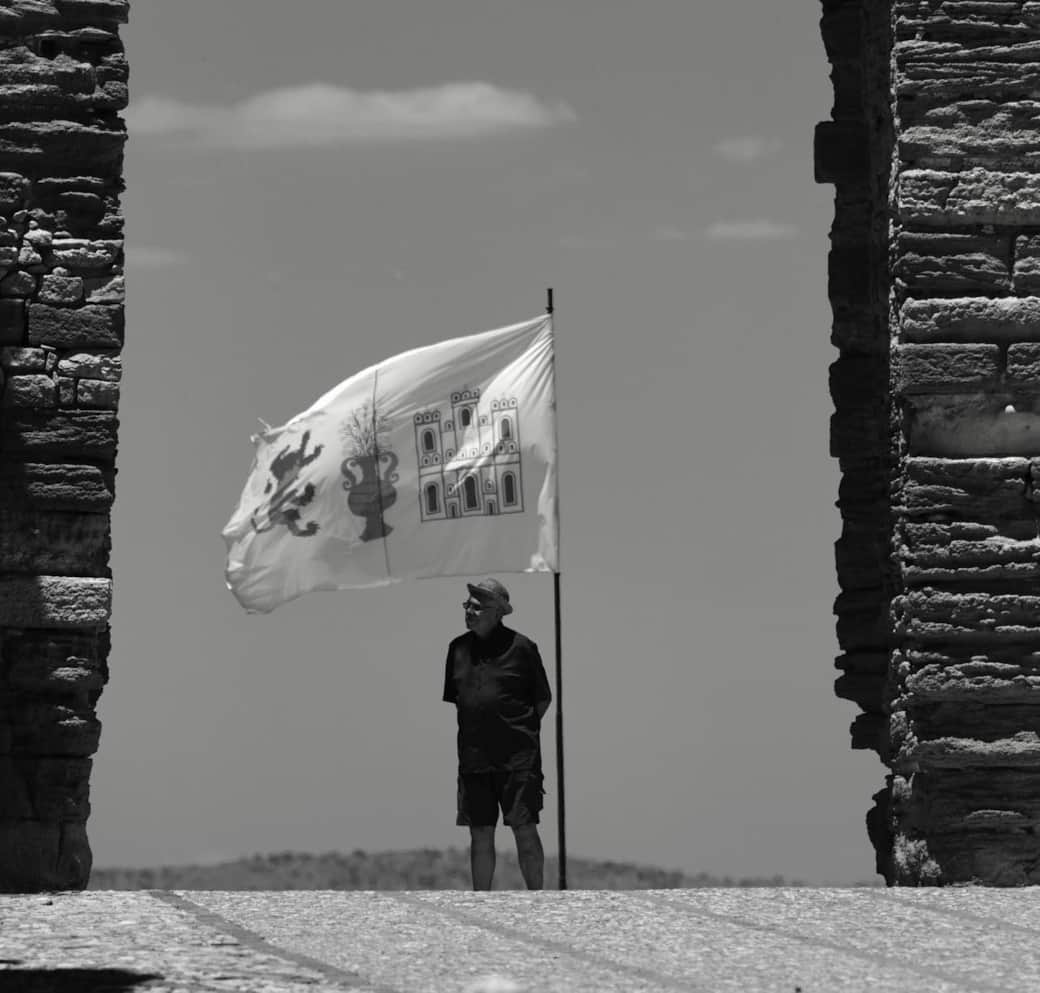
Real Colegiata - Iglesia
La fachada construida en piedra es bellamente imponente.
Construida entre 1514 y 1550 a instancias del Obispo de Málaga, Don Diego Ramírez de Villaescusa. El arquitecto fue Pedro del Campo
La Real Colegiata fue el primer edificio de estilo renacentista que se levantó en Andalucía. Se trata de una obra arquitectónica de gran belleza y maravillosas proporciones.
Contiene elementos tardogóticos junto a ejemplos de pura arquitectura renacentista, destacando su soberbia fachada, sin duda la más grandiosa de Antequera y construida íntegramente con piedra de sillería.
El interior es impresionante. Grandes pilares y 3 naves. Un lugar para sentarse y contemplar el techo de madera, las vidrieras florentinas y los magníficos objetos.

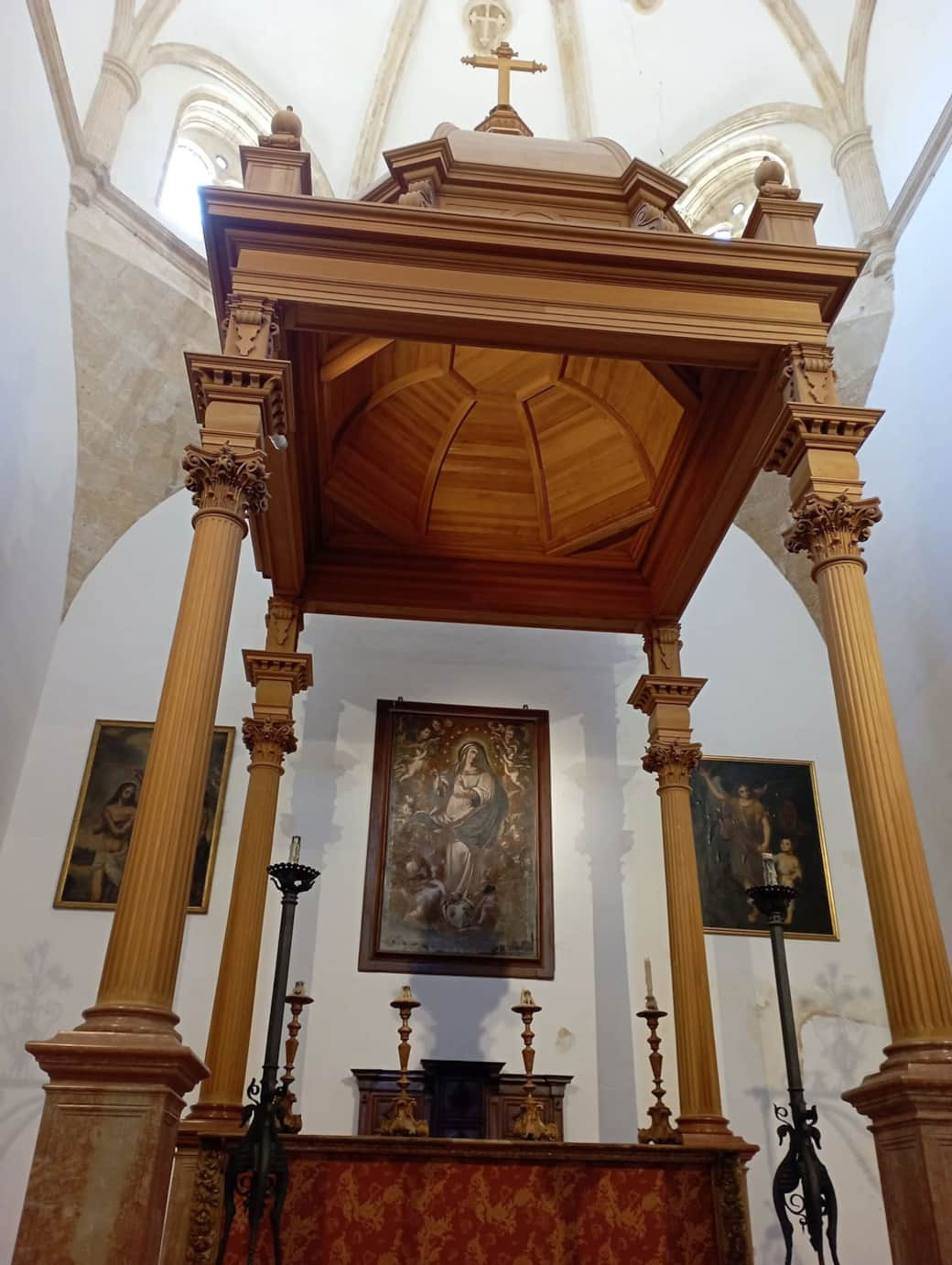
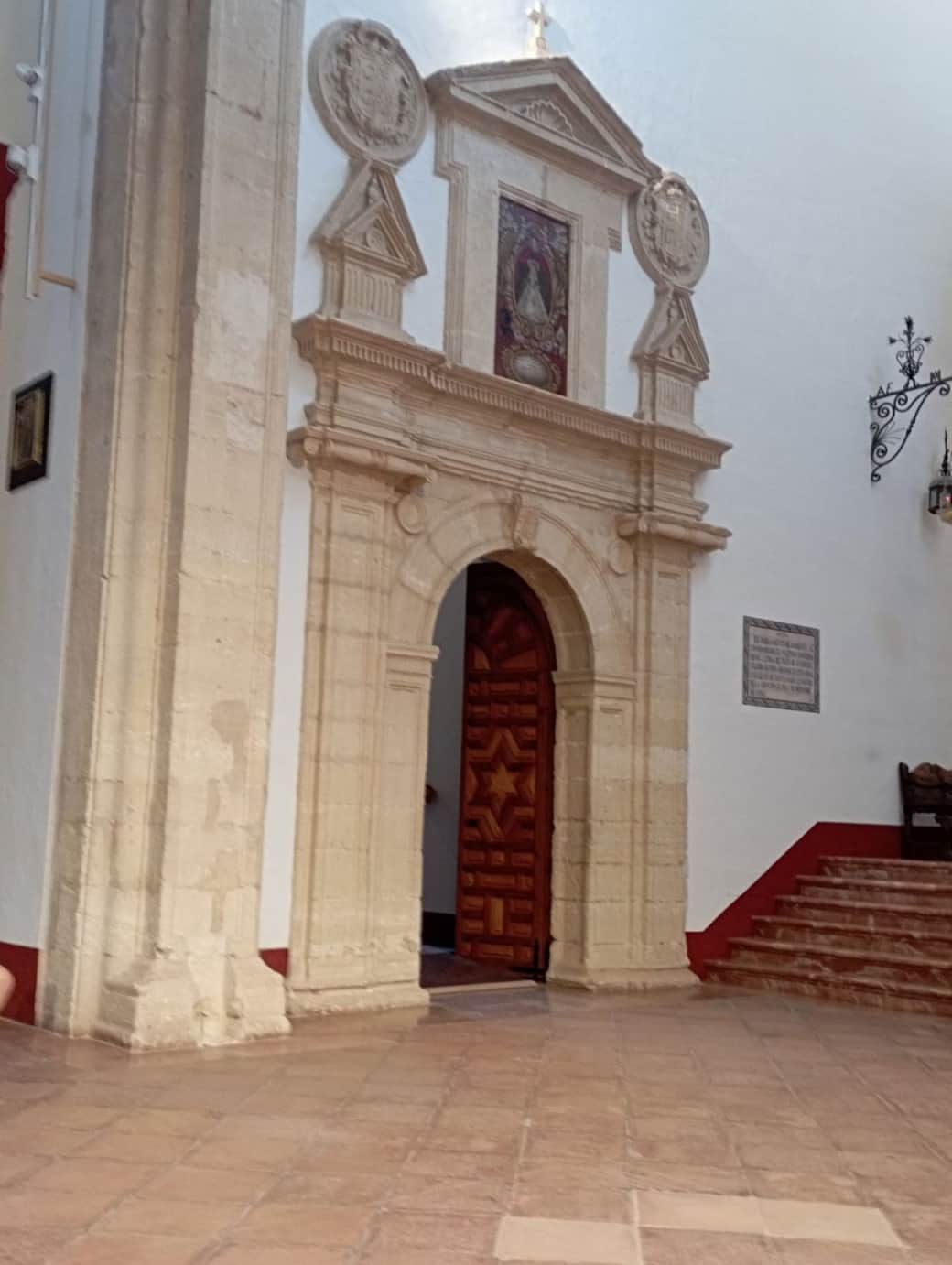
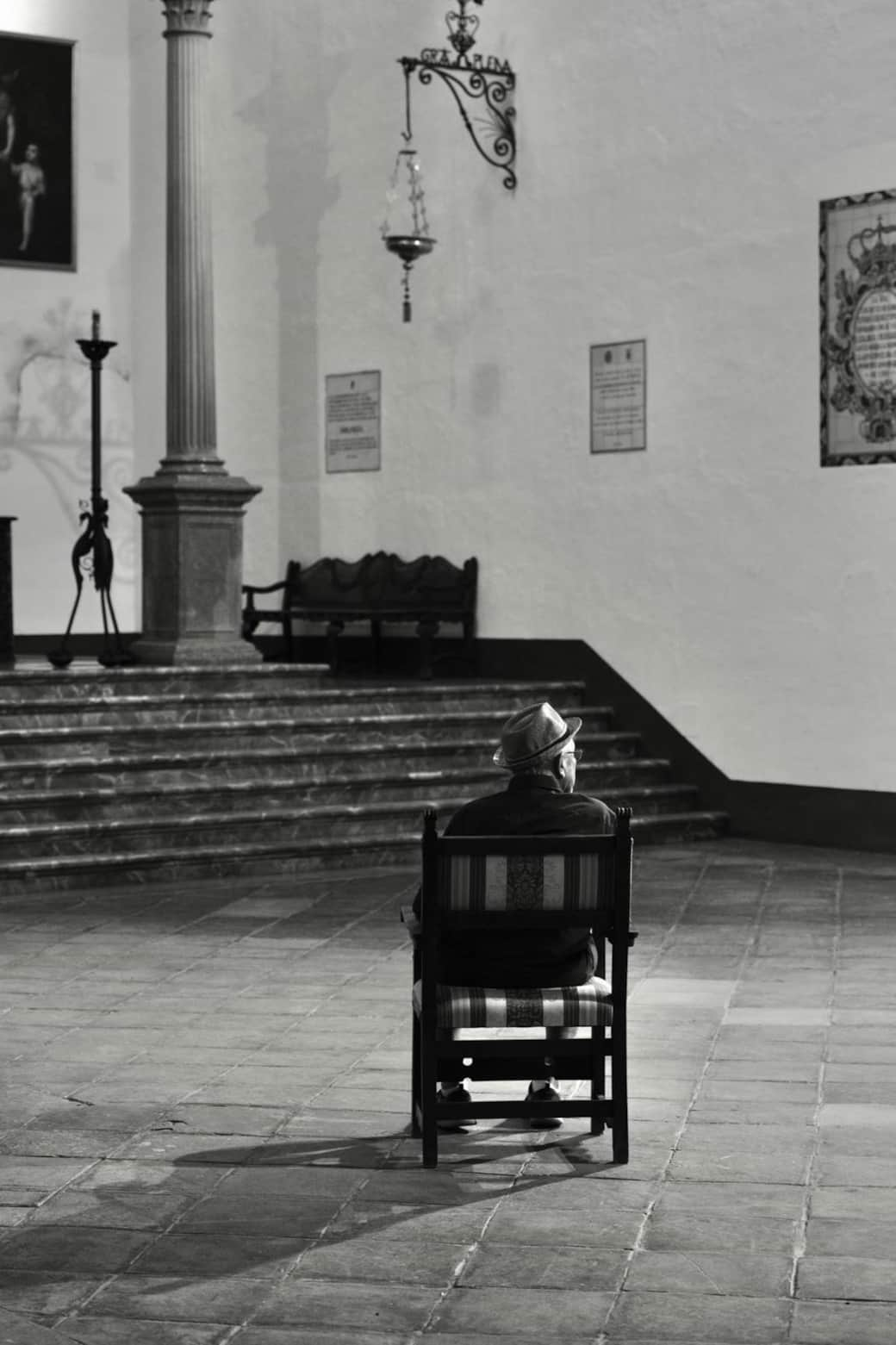
Mirador de las Termas - Ruinas de las termas romanas
El descubrimiento de estas termas es la primera prueba fehaciente de la ubicación de la ciudad romana de Antikaria. Los trabajos de excavación comenzaron en 1988 y se prolongaron hasta 1991 por la Escuela Taller de Antequera.
Se trata de unas termas de época romana que estuvieron en funcionamiento desde la segunda mitad del siglo I d.C. hasta bien entrado el siglo V d.C., sufriendo importantes reestructuraciones y reparaciones en el siglo III. En las estructuras se pueden observar los diferentes ambientes termales característicos del mundo romano: piscinas de agua fría, templada y caliente: frigidarium, tepidarium y caldarium.
En el sector central hay una gran piscina de agua fría o natatio, con bancos adosados a las paredes que en su momento estuvo completamente recubierta de mármol y pilastras adosadas con decoraciones vegetales, junto a ella hay un gran mosaico central, hoy recubierto de motivos para su conservación, el tema central es un bello ejemplo de representación mitológica: un busto de "Oceanus", divinidad acuática que aparece con todos sus atributos "pinzas y patas de cangrejo", rodeado de temas geométricos, también policromados que emulan un entorno de cubos en relieve.
Siguiendo hacia el este, encontramos una gran sala que los arqueólogos han interpretado como vestuarios, en la que volvemos a encontrar un entorno pavimentado con mosaicos: uno de ellos hace referencia a un tema marítimo: el delfín con el tridente de Neptuno y en otro una hermosa crátera en forma de copa.
Al norte se encuentran los espacios de agua caliente y templada y los colectores de las termas.
Sobre este espacio se construyó un barrio en el siglo XV d.C., del que se conservan restos de murallas, calles y pavimentos domésticos.
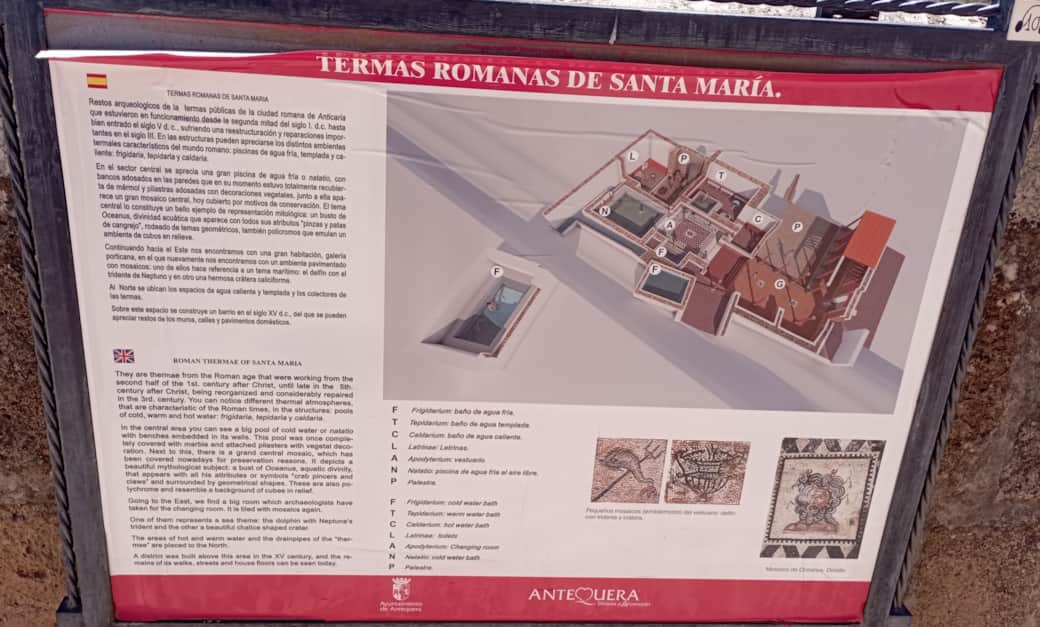
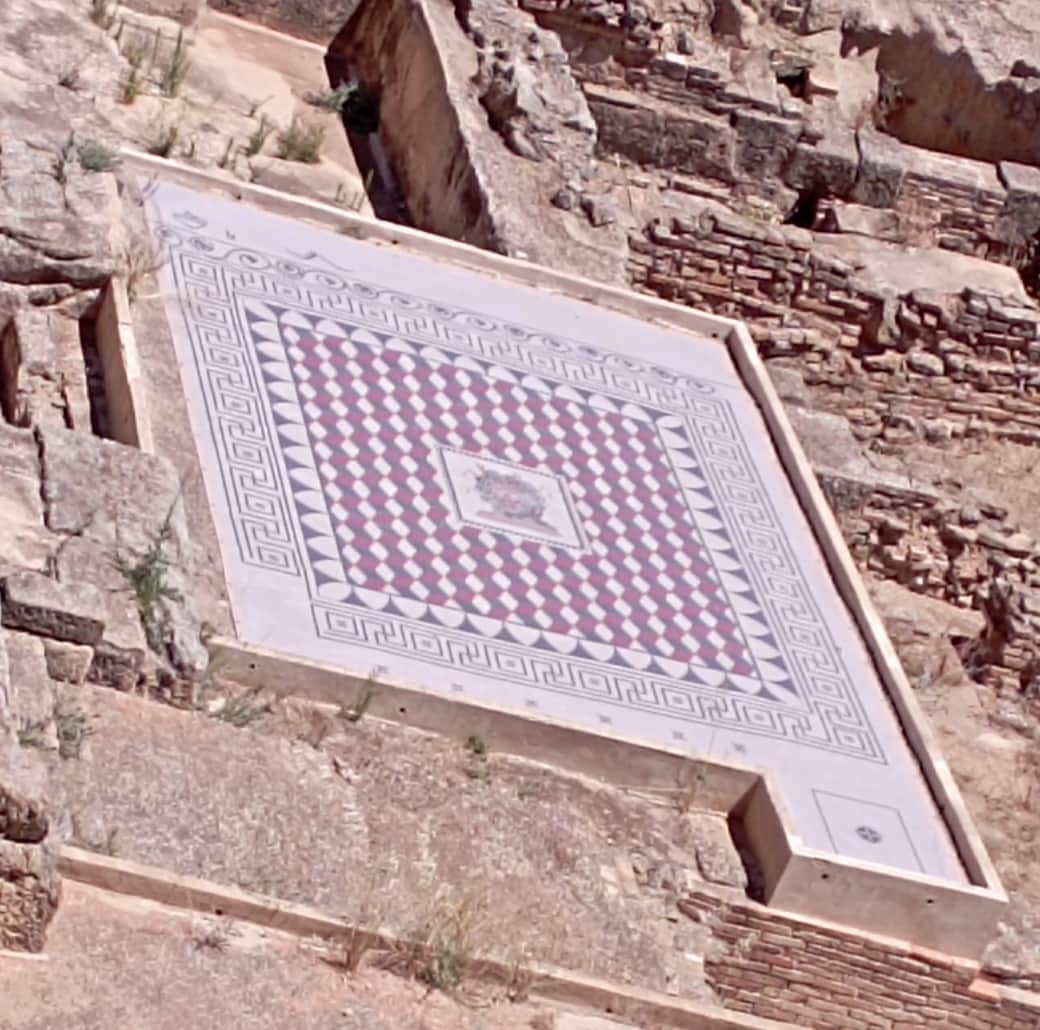
Michael Hopkin
Michael Hoskin (Londres, 27 de febrero de 1930 - Cambridge, 5 de diciembre de 2021 ) fue un arqueoastrónomo británico y profesor emérito y catedrático de Historia y Filosofía de la Ciencia en la Universidad de Cambridge.
Es homenajeado por la ciudad de Antequera en reconocimiento a sus investigaciones sobre las estructuras prehistóricas mediterráneas que llevaron a que el cercano Sitio de los Dólmenes de Antequera, de 5.000 años de antigüedad, fuera incluido en la lista del Patrimonio Mundial de la UNESCO.
Los dólmenes son tumbas colectivas donde los clanes del Neolítico y la Edad del Cobre honraban a sus muertos. Tras estudiar más de 3.000 de estos sepulcros megalíticos, el trabajo de Hoskin descubrió que, a diferencia de otras estructuras megalíticas, que se sitúan en relación con los rayos del sol, los Dólmenes de Antequera se sitúan, en cambio, en línea con una enorme roca: la Peña de los Enamorados.
Este trabajo pionero hizo que el sitio fuera declarado Patrimonio de la Humanidad por la UNESCO. En reconocimiento a sus investigaciones, el Gobierno español concedió a Hoskin la Medalla de Oro de las Bellas Artes en 2015.
Desde su declaración como Patrimonio Mundial de la Humanidad por la UNESCO, la economía de la ciudad de Antequera se ha visto transformada por la afluencia de turistas. En reconocimiento a la contribución de Hoskin a Antequera, se ha creado una nueva plaza en su nombre con vistas a la Peña de los Enamorados y los Dólmenes de Antequera.
En un acto oficial, el alcalde de Antequera, Manuel Barón, y el delegado del Gobierno central en Málaga, Miguel Briones, junto con Hoskin y 25 miembros de su familia, descubrieron en esta nueva plaza un busto de bronce dedicado al arqueólogo y a sus investigaciones. El busto va acompañado de unas palabras en nombre de la ciudad en las que se agradece a Hoskin su "crucial labor investigadora" y su contribución a la subsistencia de la ciudad
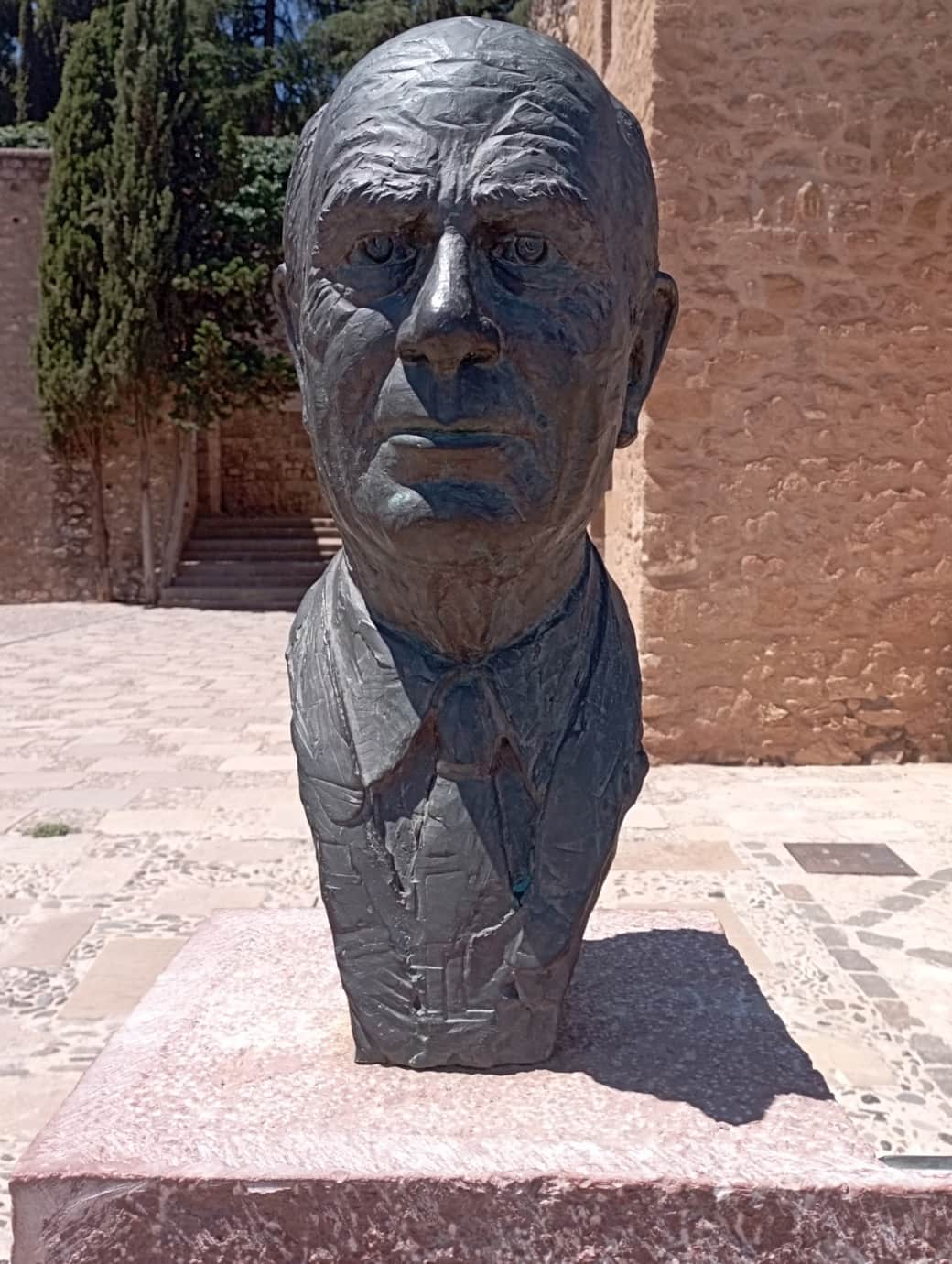
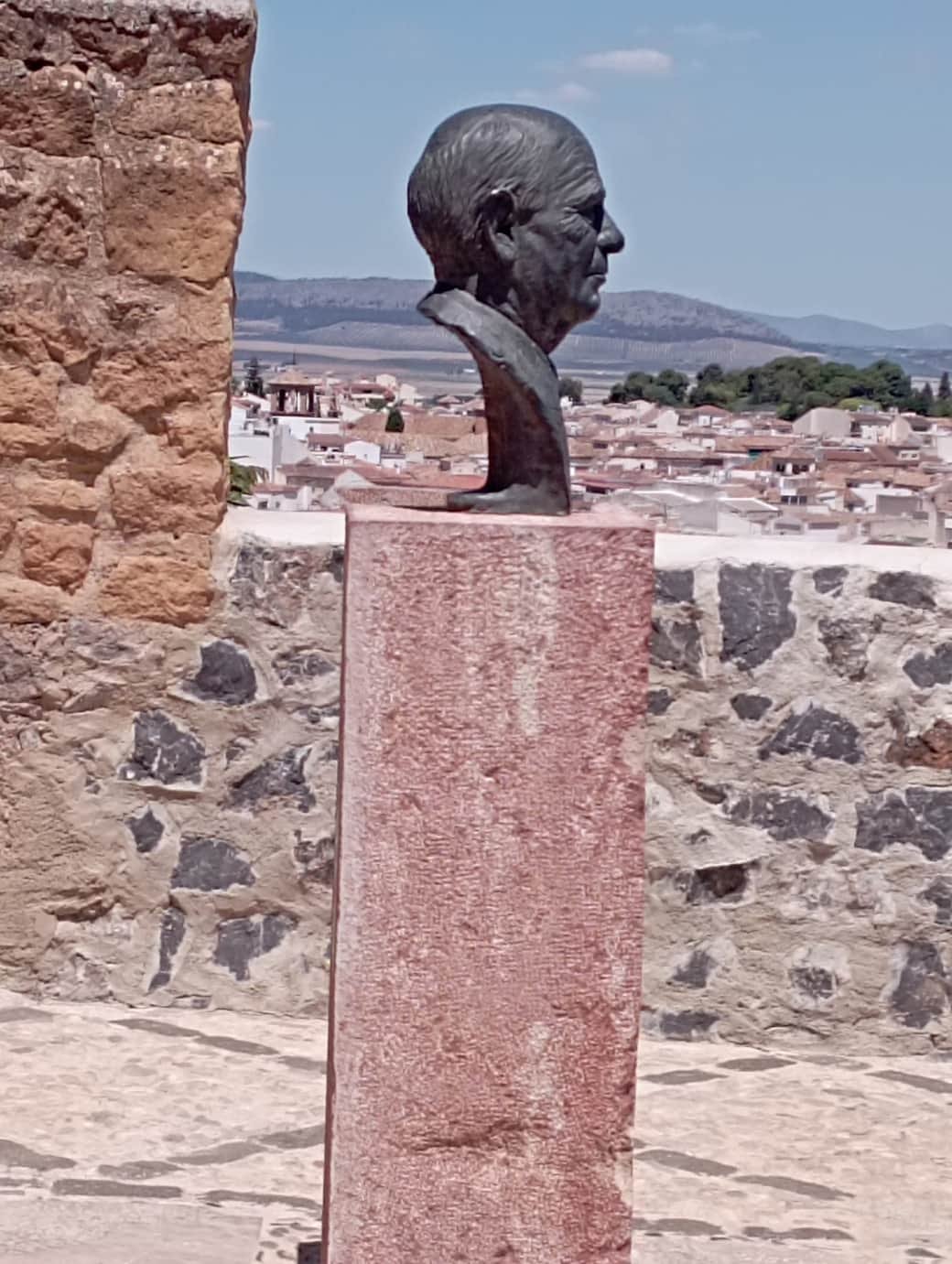
Cuando fuimos a la Notaría de Antequera a firmar nuestra casa, después nos llevaron a comer a una plaza con un restaurante enfrente.
Lo único que recuerdo es que había una estatua de un caballo y un hombre.........
Buscando en Google llegamos a la Plaza del Coso Viejo. La estatua es de Fernando I en su caballo.
El restaurante es Meson Coso Viejo y disfrutamos de una pizza y una hamburguesa. Gran entorno, gran comida y un gran lugar para sentarse y ver el mundo pasar.

